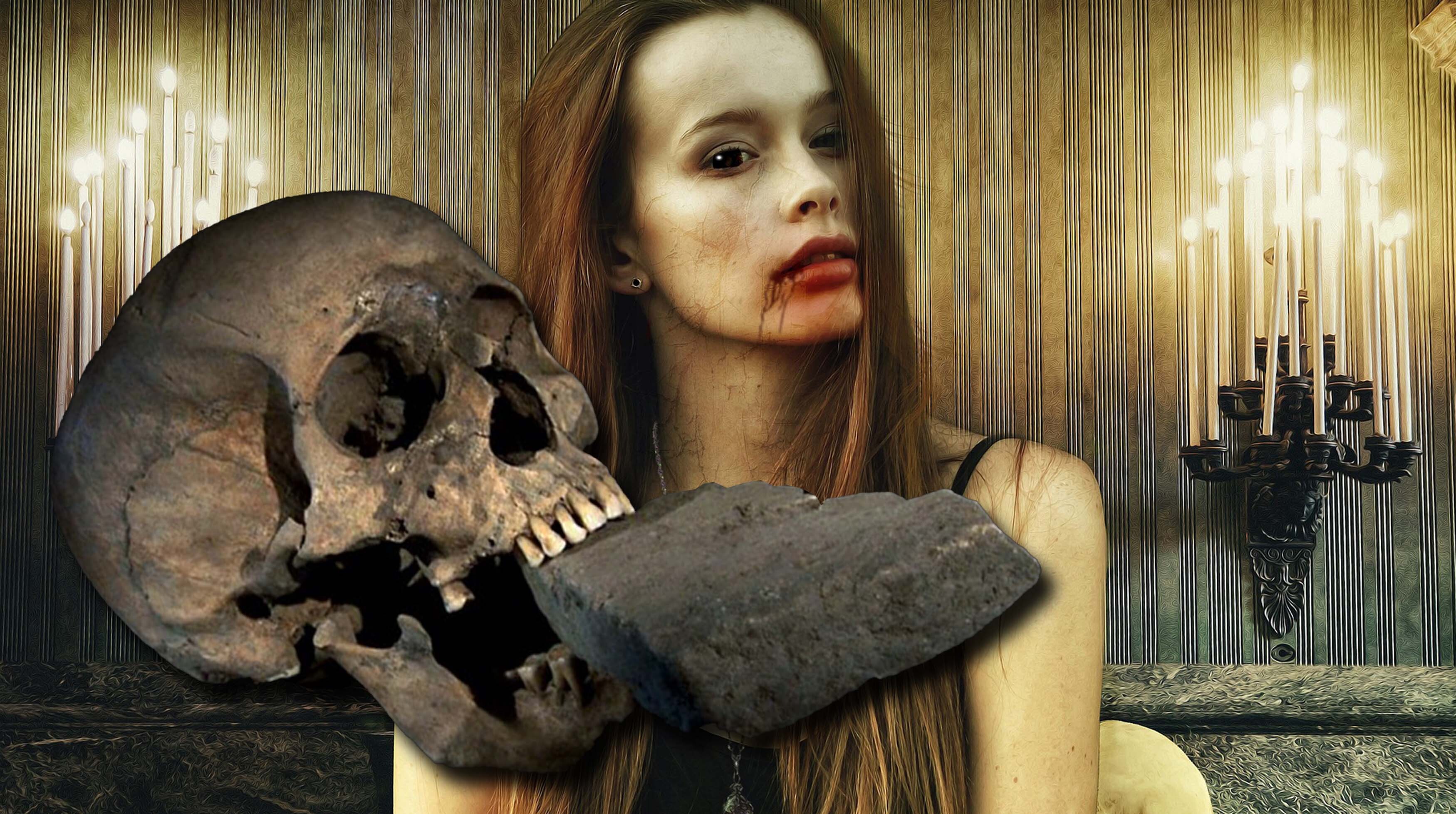The Vexing Vampires of Venice
When a 16th century mass grave was excavated near Venice, Italy, a skull was found with a brick wedged in its mouth. Researchers have found the strange reasoning for the find. It was an anti-vampire measure! In this episode, we talk about early Italian beliefs about vampires and this strange discovery, then we chat with Educator and Musician, Josh Quillen!

It was the mid 2000s when the Archeological Superintendent of Veneto in Italy promoted a research project on mass graves. They were on an island just northeast of Venice: Lazaretto Nuovo.
A few years ago, Jack White had an album and a song named “Lazaretto” and I remember googling it then. It’s a word for an annexed area for isolating undesirables. In the ages of plagues, it was necessary for people to be quarantined to these islands, but they also used them for criminals and those deemed to be insane.
A skeleton with a brick firmly placed into its gaping open jaw. There were no other bricks nearby. It wasn’t a coincidence or accident. It was evident to the scientists that this brick had been deliberately placed there, so they set to out to find out why.
They were first looking at why those graves were there to begin with. The first black plague tore through Europe in 1348 and Venice was hit incredibly hard. They responded with these two Lazarettos – the old one in 1423 and the new one in 1468. The new Lazaretto also acted as a quarantine station for people coming to Venice from the sea. They could be checked for symptoms of the plague there before being allowed to come into the city. There were two additional plagues that hit Venice, one in 1576 and one in 1630. Most of the people who were sent to the island with plague never left. That helps to understand the mass grave, but not the body with the brick in its mouth.
By measuring the bones, they could tell that the person was a woman who most likely died in her sixties. The researchers started looking around at burial practices around the world from the time period and that’s where we find out about “The Shroud Eaters.”
In German folklore, the Nachzehrers, or Shroud Eaters were a very particular type of vampire. They’re a little different than the normal vampire we hear about. They don’t become a vampire from being bitten or scratched by one – they don’t spread their vampirism to other people. But it’s related to communicable disease. The first person to die from a plague is said to be a shroud eater. They were called that because they would begin by eating their own burial shroud. Then the shroud eater would feed on their own bodies. Finally, their loved ones and family members would then become weak or die as the shroud eater was feeding on their life force from the grave. I found a couple other sources that said shroud eaters were created when a death occurred from suicide or by accident.
The brick in the mouth was a practice that was put in place to prevent the person from eating their shroud. In the case of the body recovered in Venice, it’s believed that the body was not initially buried this way, but exhumed and reburied with the brick. The likely explanation for this is when the body was uncovered, it was seen that the burial shroud had a hole around the mouth area, and was assumed to have started to eat the burial shroud, and thus deemed to be one of these vampires. Another thing that would have clued them toward vampire is that parts of the body were thought to have continued to grow, like fingernails. The brick in the mouth would of course prevent the body from eating more of the shroud and would protect other people from losing their life force.
Of course all of this sounds pretty crazy, but there’s a logical explanation for much of it. We’ll talk about that after a few words from our sponsors.
So what’s the truth about this story? Well we know that the body with the brick in the mouth was definitely uncovered. And most accounts point to the brick not being there by accident, though some theories do state that it could have happened when dirt was being moved around on the island. This is an island that’s been purposed and repurposed so many times, lots of buildings were built and demolished through the years.
Most seem to think that the vampire story is the likely explanation for the brick. Of course there’s no evidence that anything like a vampire exists, but the folklore and the ancient beliefs are very true. There’s an ancient book, “De Masticatione Mortuorum in Tumulis” from 1728. That title translates to “On the Chewing of the Dead in their Tombs.” It’s quite literally a scientifically worded dissertation by Michael Ranft of Germany about this phenomenon of shroud eaters.
We know that science evolves and improves with time. And before we knew how bodies decompose, it would make sense that when a body was dug up, the mouth would be the place that would show signs of decomposition, which would then affect the burial shroud in that area. The brain is the first organ to decompose, and if insects and critters – I’m sorry this is gross – were to have access to the body, that would be a pretty easy place for them to enter. Critters and insects also help to understand the idea of a shroud eater feeding on its own body. I already discussed about how they thought the nails continued to grow – yet another case of people not understanding the science. And then there’s the idea of the vexed family and loved ones. Remember, we’re talking about the age of the plague. If you had the plague and lived near people, there’s a good chance that they would become sick too. And there were some really backwards ways of thinking about health back then. In the age of the plague, people were told not to bathe. This is before people knew about germs and bacteria. So it would make sense that they would see family members of the sick also getting sick. They would see these corpses with their long nails, hair, and exposed teeth, and just assume that these were signs of a shroud eater.
So this ritual of blocking their mouth with something like large rock or brick was born. According to Matteo Borrini, an anthropologist from the University of Florence, “To kill the vampire you had to remove the shroud from its mouth, which was its food like the milk of a child, and put something uneatable in there. It’s possible that other corpses have been found with bricks in their mouths, but this was the first time the ritual has been recognized.”
So while The Internet Says it’s True, remember that there’s no such thing as a shroud eater, just stupid humans who didn’t know any better and those of us here to tell the stories 400 years later.
Review this podcast at https://podcasts.apple.com/us/podcast/the-internet-says-it-s-true/id1530853589
Bonus episodes and content available at http://Patreon.com/MichaelKent
For special discounts, visit http://theinternetsaysitstrue.com/deals


